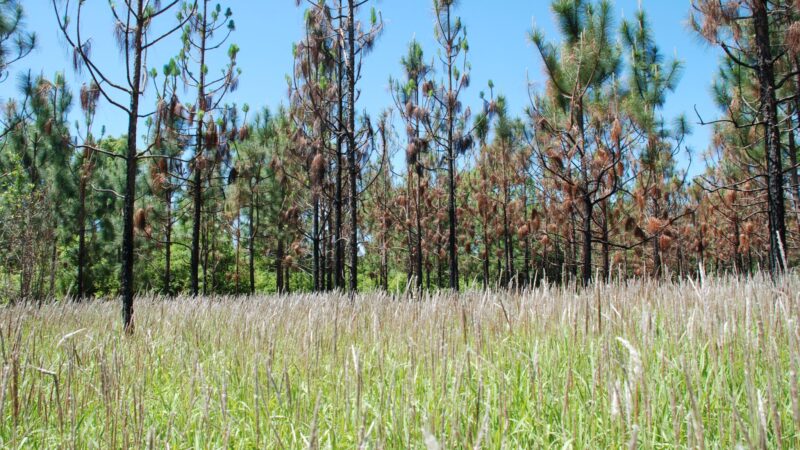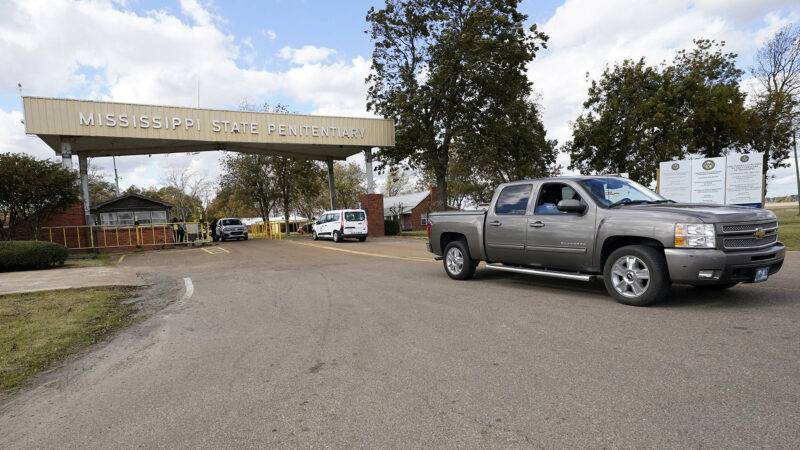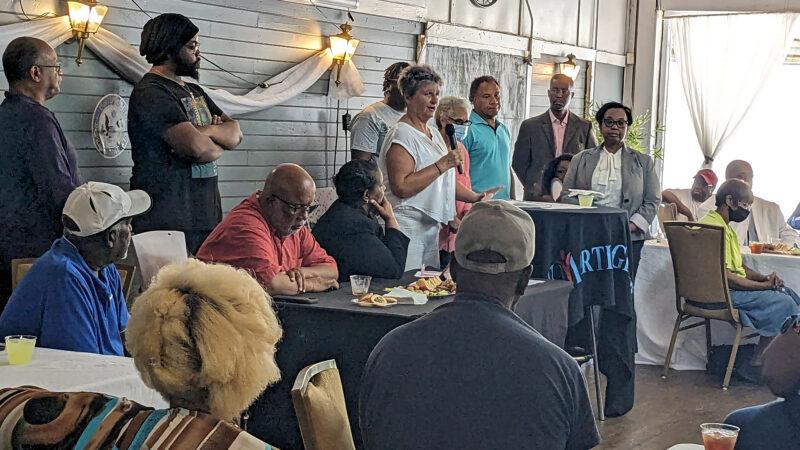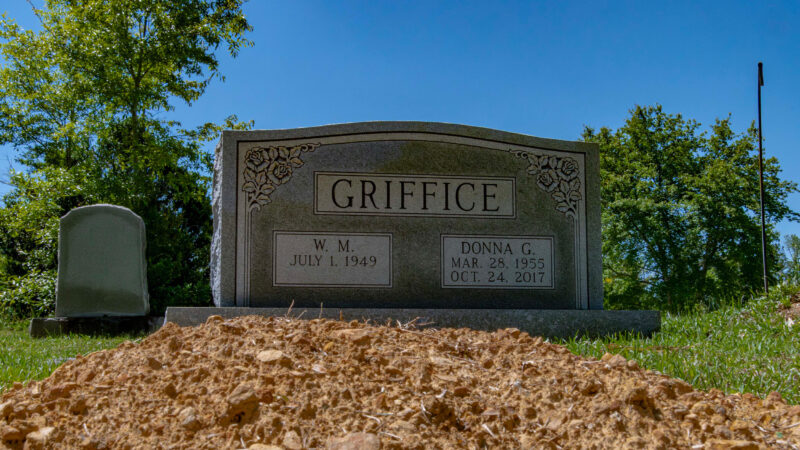This spiky-stemmed invasive grass is taking over Alabama
On his family’s land in rural Etowah County, Nick Jackson grows loblolly pine trees among a diverse range of vegetation, from oak trees to blueberry bushes.
But in 2016, a new species popped up on the property.
“We were doing site prep for planting loblolly pine, and we noticed a circular pattern of grass that was different in color to the surrounding area,” Jackson said. “That’s what triggered us to investigate a little bit further. And it was cogongrass.”
Cogongrass is an invasive plant that easily spreads and aggressively crowds out native species. And despite statewide mitigation efforts, it’s taking over Alabama.
Not your typical grass
At first glance, there’s nothing especially unique about cogongrass. Its thin green leaves stretch several feet high and produce fluffy, white dandelion-like seeds in the summer. The grass grows in thick, circular patches with intricate underground webs of spiky stems known as rhizomes.
“It’s so thick, it chokes out all the natural plants and grasses that the ecosystem is dependent on. So this has a large impact on the diversity and health of the ecosystem,” Jackson said.
Where cogongrass grows, few species survive. No crops. No timber. And the grass is really hard to get rid of.
“It’s one of the top ten worst weeds in the world, and it’s a weed everywhere,” said Nancy Loewenstein, an extension specialist with Auburn University.
Loewenstein has studied cogongrass for nearly two decades. She said the species entered the US in the early 1900s through the port of Mobile and spread under the radar for decades.
“For the longest time it can appear that you don’t really have a problem,” Loewenstein said. “And then the population gets to such a point where it starts spreading really rapidly. And all the sudden it’s like, ‘Good grief. This stuff is everywhere. How’d that happen?’”
Alabama is at that point.
What doesn’t kill it, makes it stronger
Today, cogongrass is found in 62 of Alabama’s 67 counties and has especially saturated the southern part of the state.
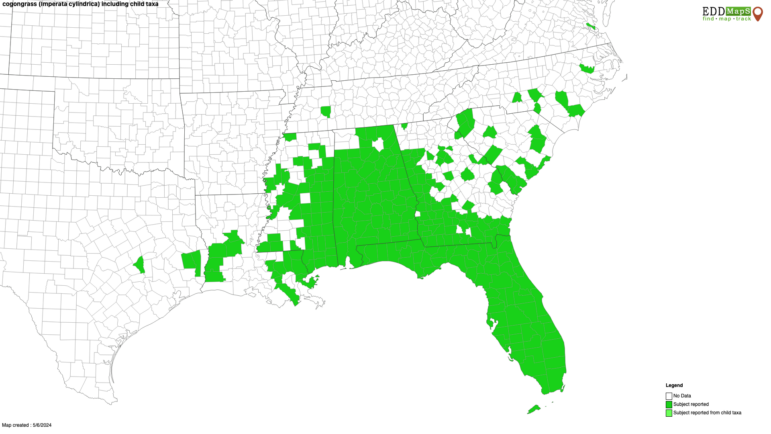
Part of what makes cogongrass such a well-adapted species is that it evades many mitigation strategies.
Animals don’t eat the grass, because it’s difficult to digest. Landowners can’t mow it away, because that could stir up the underground rhizomes, which can break off and sprout new cogongrass infestations.
Burning the plant is also off the table.
“It’s a fire-adapted species, so fire actually contributes to its spread and its vigor,” Loewenstein said.
The most effective way to get rid of cogongrass is treating it with herbicides, which can be a controversial approach, according to Emma McKee, invasive species coordinator with the Longleaf Alliance.
McKee works with landowners in southern Alabama who face cogongrass infestations and said sometimes they are against spraying chemicals on their property.
“But by the end of my 10-minute spiel about how intense this plant is, they’re on board with using the herbicide,” McKee said.
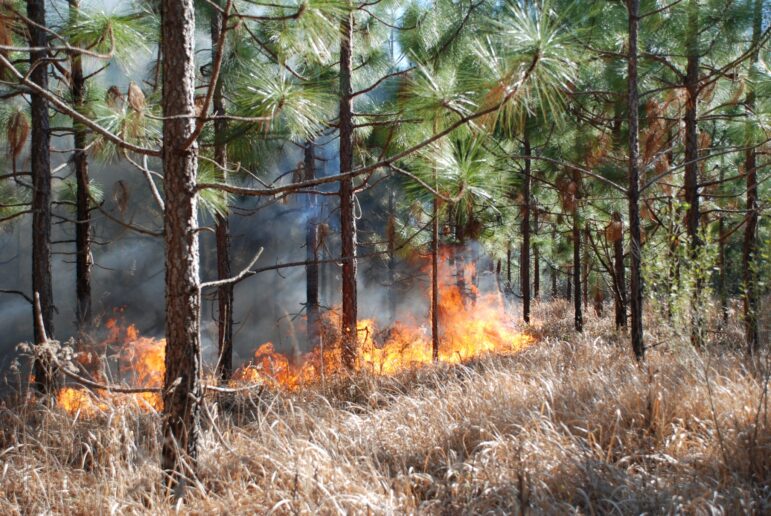
Drawing a line in the sand
When applied carefully and correctly, landowners like Jackson said the treatment is worth it.
In 2022, Jackson signed up with a new program offered by the Alabama Forestry Commission (AFC). For three years, the agency sends people to his property to spray the cogongrass infestation once a year at no charge.
“They’ve done a great job,” Jackson said. “They (the AFC) can control how they spray very precisely. They limit any overspray or undesirable mortality of the native vegetation.”
Jackson said the herbicides have helped kill some of the cogongrass patch, and have stopped the species from expanding further on his property.
That’s likely the best outcome, according to Loewenstein. She said across much of south Alabama, cogongrass has spread so much, it’s unlikely landowners will be able to get rid of it. But there is still time to protect land in the northern part of the state.
“We know how to not spread it,” Loewenstein said. “So if we can make a line in the sand … let’s keep it from spreading further.”
Gulf South states among U.S. leaders for juvenile life without parole sentences, study shows
A youth sentencing study shows Alabama and Mississippi are among just four states that top the nation in new juvenile life without parole sentences since 2012.
Workers at Alabama’s Mercedes plants vote against joining a union
The workers voted 56% against the union, according to tallies released by the National Labor Relations Board, which ran the election.
Taylor Hunnicutt is championing her home state with debut album ‘Alabama Sound’
Alabama offers a diverse symphony of swampy rock, swaggering blues, murky country, and bone-rattling soul. It’s a sound singer-songwriter Taylor Hunnicutt recently reimagined on her debut album, Alabama Sound, which is out now.
UAB building among Alabama’s first to feature ‘bird safe’ glass
Advocates hope the new glass will prevent window collisions, a leading causes of bird mortality.
Researchers look into community health impact of wood pellet production in rural Mississippi
Brown University and Tougaloo College students are testing for potential air and noise pollution near the Drax wood pellet plant in Gloster, Mississippi.
Alabama coal company sued for a home explosion is delinquent on dozens of penalties
Crimson Oak Grove Resources has been cited for 204 safety violations since the March 8 blast, many involving “significant and substantial” safety violations.
